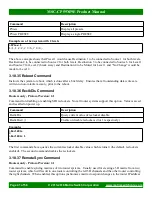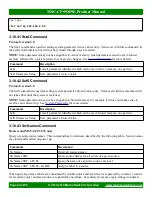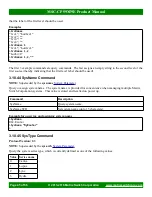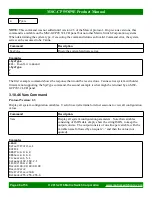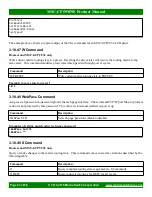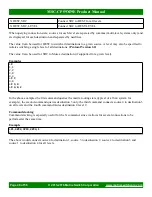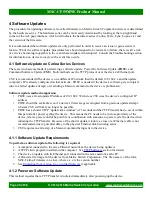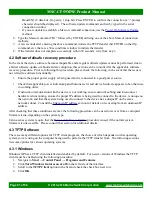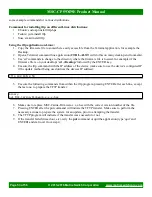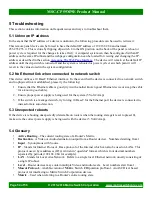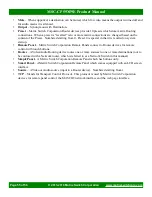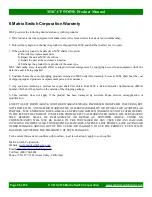
MSC-CP59X59E Product Manual
5 Troubleshooting
This section contains information on frequent issues and ways to troubleshoot them.
5.1 Unknown IP address
In the event that the IP address of a device is unknown, the following procedure can be used to retrieve it:
This remote panel device can be forced to have the default IP address of 192.168.2.64 and netmask
255.255.255.0. This is done by flipping dip switch 8 to the ON position on the back of the panel (a reboot or
power cycle is required for the changes to take effect). A computer system can then be configured with an IP
address on the same IP subnet and the webpage configuration can be loaded for viewing and changing the IP
address as described in the section
Accessing The Web Page Interface
. The device will remain at the default IP
address until the dip switch is turned off and the system is rebooted or power cycled, at which point it will
revert to the value stored in the system configuration.
5.2 No Ethernet link when connected to network switch
This device utilizes a 10 BaseT Ethernet interface. In the event that the device is connected to a network switch
and no physical link is established, please try the following:
1. Ensure that the Ethernet cable is good (try it with another known good Ethernet device or swap the cable
for a known good cable).
2. Ensure proper power supply is being used for the system (5 Volt 2 Amp)
3. If the switch is a managed switch, try forcing 10 BaseT for the Ethernet port the device is connected to,
instead of rate auto detection.
5.3 Unexpected reboots
If the device is rebooting unexpectedly (detectable on routers when the routing state gets reset to preset 0),
make sure the correct power supply is being used with the device (5 Volt 2 Amp).
5.4 Glossary
•
Active Routing
– The current routing state of a Router's Matrix.
•
Destination
– A Video or Audio destination (output from a Router device). Numbered starting from 1.
•
Input
– Synonymous with Source.
•
IP
– Stands for Internet Protocol. Base protocol of the Internet which can also be used on LANs. This
protocol uses 4 byte addresses (IPv4) written in "quad dot" format, which is four decimal numbers
separated by periods (192.168.2.60 for example).
•
LAN
– Stands for Local Area Network. Refers to a single local Ethernet network, usually consisting of
a single IP subnet.
•
Level
– Router devices may contain multiple Video and Audio levels. Level numbers start from 1.
•
Mascot Protocol –
An abbreviation of
MA
trix
S
witch
CO
rporation pro
T
ocol. An ASCII text based
protocol for interfacing to Matrix Switch Corporation devices.
•
Matrix
– Used when referring to a Router's entire routing state.
Page 54 of 56
© 2013-2016 Matrix Switch Corporation


